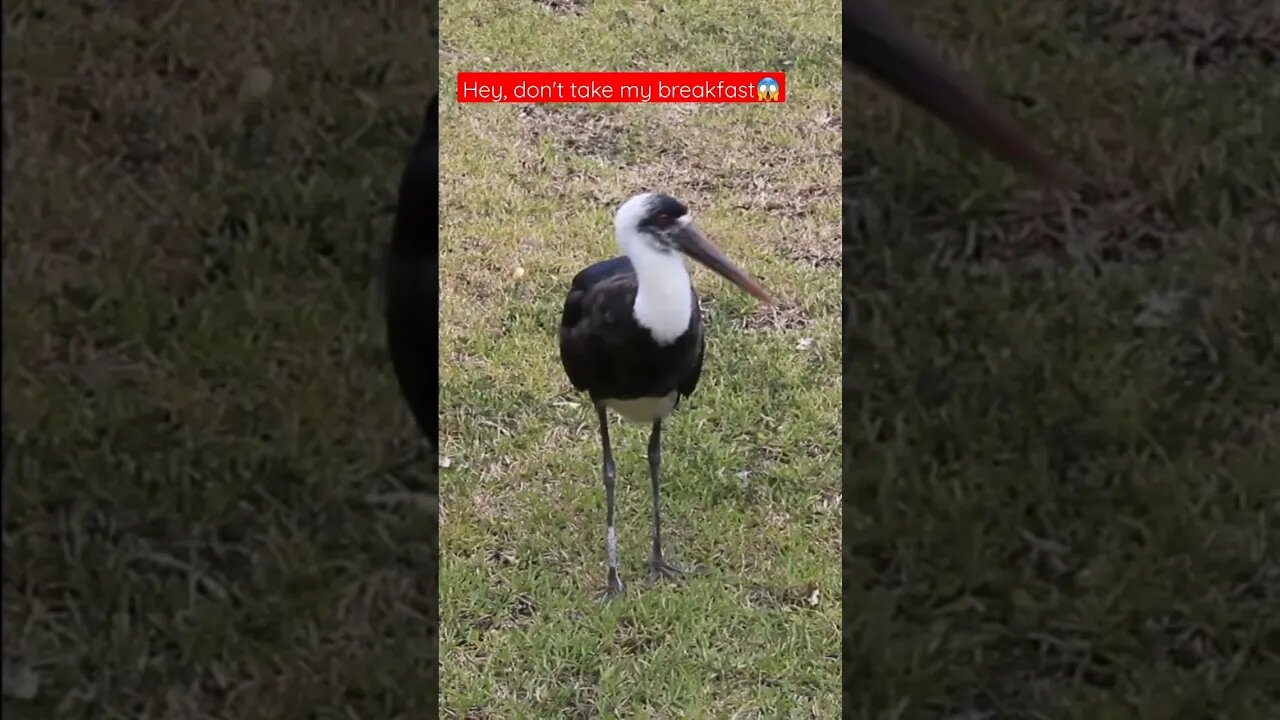Premium Only Content

HEY, DON'T TAKE MY BREAKFAST😱 #youtube #newvideo #shortsvideo #subscriber #video #ytshorts #ytshort
The Woolly-necked Stork, also known as the White-necked Stork or the Maguari Stork, is a large bird species found in various parts of Africa, including South Africa. Here are some key details about the Woolly-necked Stork:
Appearance: The Woolly-necked Stork is a tall bird, standing around 90-100 cm (35-39 inches) tall. It has a predominantly white body with black flight feathers and a long, black, woolly neck. The bill is thick and pointed, and the legs are long and red.
Distribution: In South Africa, the Woolly-necked Stork is primarily found in the northeastern parts of the country, including Kruger National Park and the surrounding areas. However, it can also be seen in other parts of southern Africa, such as Zimbabwe, Botswana, and Namibia.
Habitat: These storks inhabit a variety of wetland habitats, including marshes, floodplains, and riverside areas. They are often seen near water bodies, where they feed on various aquatic creatures.
Diet: Woolly-necked Storks are carnivorous birds that primarily feed on fish, frogs, small reptiles, insects, and occasionally small mammals and birds. They use their sharp bill to catch their prey.
Behaviour: These storks are known for their distinctive soaring flight pattern and their tendency to stand motionless for long periods while waiting for prey. They often nest in tall trees or on cliffs, and their nests are large and made of sticks.
Conservation status: The Woolly-necked Stork is not currently considered globally threatened. However, like many other bird species, it faces threats such as habitat loss and degradation due to human activities.
Please note that while the information provided here is generally accurate, it's always a good idea to consult multiple sources for a comprehensive understanding of any topic.
-
![I AM FINALLY BACK :: PUBG: BATTLEGROUNDS :: RUMBLE NOW HAS GIFTED SUBS!!! [Merry Christmas] {18+}](https://1a-1791.com/video/fwe1/22/s8/1/e/f/C/6/efC6v.0kob-small-I-AM-FINALLY-BACK-PUBG-BATT.jpg) 9:57:19
9:57:19
a12cat34dog
12 hours agoI AM FINALLY BACK :: PUBG: BATTLEGROUNDS :: RUMBLE NOW HAS GIFTED SUBS!!! [Merry Christmas] {18+}
27.9K4 -
 3:55:42
3:55:42
STARM1X16
11 hours agoMerry Christmas Fortnite
81.5K10 -
 2:45:33
2:45:33
Sgtfinesse
11 hours agoMerry Christmas Night
65.8K19 -
 3:51:18
3:51:18
tacetmort3m
1 day ago🔴 LIVE - (MERRY CHRISTMAS) TIME TO SPREAD DEMOCRACY - HELLDIVERS 2 OMENS OF TYRANNY
41.2K2 -
 2:46
2:46
BIG NEM
15 hours agoDiscovering RAKIJA: The Holy Liquer of the Balkans
29.2K2 -
 1:11:38
1:11:38
Film Threat
20 hours agoCHRISTMAS DAY CHILL STREAM WITH CHRIS GORE | Hollywood on the Rocks
148K32 -
 14:22:40
14:22:40
The Quartering
1 day agoYule Log Christmas MAGA Edition With Memes! Come Hang Out!
236K31 -
 38:41
38:41
MYLUNCHBREAK CHANNEL PAGE
1 day agoTimeline Begins in 1800? - Pt 1 & 2
113K69 -
 1:23:41
1:23:41
Game On!
1 day ago $13.99 earnedNetflix NFL Christmas Games Preview and Predictions!
97.4K13 -
 2:05:07
2:05:07
Darkhorse Podcast
1 day agoWhy Trump Wants Greenland: The 257th Evolutionary Lens with Bret Weinstein and Heather Heying
325K904